
Steve Jobs had come a long way from being the lank haired scruffy individual Nolan Bushnell employed at Atari in the mid 1970s. Together with Steve Wozniak they'd created the Apple I and Apple ][ series of machines, the former being sort of a prototype of the latter since not many I's were sold. The ][ series was massively popular in educational establishments but missing from the business world where bigger timesharing machines ruled the roost. Apple's answer was the Apple ///, a machine that ended up being more bother than it was worth. Steve Jobs finished the case design before the motherboard was finished, with the end result being that the machine constantly overheated and broke down.
The answer was the Apple ///+ but by then it was too late. The then CEO of Apple, John Sculley (former CEO at Pepsico dontchaknow) unceremoniously booted Jobs out of Apple and left him with no choice other than to set up another company with 14 ex-Apple employees and some funding. That company was NeXT, though their place in history had yet to be set.
Rather than try and create their own OS from scratch the NeXT engineers focused on a UNIX background since UNIX was a very mature technology in the late 1980s, as well as being massively prevalent in educational establishments. They chose the Mach kernel (as later used by Digital Equipment to create OSF/1, the forerunner of today's Tru64 UNIX until HP squish it into nothingness) and created their own GUI called NeXTStep that used a modified version of Adobe's PostScript page description language to render the desktop and applications - this meant there was a strong correlation between what was on the screen and what was printed since the same engine did both. Also created was a development environment called Objective-C that made application development for NeXTStep much easier.
The machine was network-ready with BNC and twisted-pair ethernet ports and included very advanced features like email and even voicemail. The bundled software included WriteNow, a WYSIWYG word processor like LisaWrite on the Apple Lisa, Webster which was a version of Webster's Dictionary, even sound recorders and playback utilities and an SQL Database server (in 1989?!) but the latter isn't on my system. Well, I haven't found it yet if it is :) There was also no power button - you switched the machine on by hitting the power key on the keyboard....very Apple Mac, but you also used the power key to shutdown - no option was present on the Workspace menu - which was also reminiscent of the Apple Lisa that Jobs helped to design. All in all it was a massively advanced platform for its day. There was even a 400dpi laser printer dedicated to the machine.....
The first systems - NeXT Cubes - sold reasonably well, but you can guess that there's a problem coming up can't you :) Yup, like the Apple Macs of the day they were Motorola 68030 powered, but Steve Jobs saw the future as Magneto-Optical technology and so didn't include a hard drive with the first Cubes. Instead there was a Magneto-Optical drive which meant the machines were slow to boot and access the drive. Of course it was possible to add in a hard drive, NeXT offered 2 5 1/4" models that let you increase storage to almost a gigabyte! The later NeXT Station, which was slab-sized and much smaller included a hard drive....no sign of a MO drive in sight.
The development environment, desktop and GUI were hailed as fantastic. Basically, the NeXT users told the company that they loved the software but hated the hardware, so NeXT dipped out of hardware production in 1993, focusing instead on their ports of NeXTStep. By now it was called OPENSTEP since it ran on many diverse platforms. The software ran well on x86 machines from Intel (and still does), SUN Microsystems standardised on the desktop for a while and once the Free Software Foundation and others saw it it was quickly ported to other UNIX and Linux platforms as GNU OPENSTEP, still available today. There's even a lookylikey copy of NeXTStep called LITESTEP which is an alternate shell to Windows Explorer.
Of course, the real future of NeXTStep lay within the walls of Apple. In the mid 90s Apple was looking to create a next-generation operating system to replace the oft-quoted flawed (but loved) MacOS and they were looking at a UNIX based platform, though not ditching MacOS altogether - there was an internal project called 'Star Trek' that had a working version of MacOS on Intel hardware, but it was running at the time when Apple were moving to PowerPC based hardware and it seemed that 'Star Trek' ran faster on an Intel 486 PC than on a PowerPC based machine. Oops.
After checking many alternatives Apple suddenly bought NeXT in 1996 and NeXTStep became the basis for a new OS project called Rhapsody. Without beating about the bush too much Rhapsody became Mac OSX and is what powers all new Macs from the G4 upwards. The underlying UNIX kernel - Darwin - is freely downloadable from Apple's website.
The historical significance of NeXT machines is down to a certain individual called Tim Berners-Lee, who some of you may know was the inventor of the World Wide Web you're using to look at these words now. Basically, in 1991-2 he created the world's first web browser on NeXT hardware as a means of sharing ideas with colleagues in the CERN laboratory in Switzerland. A Google search will turn up many entries including screenshots of said browser. Very primitive by today's standards naturally, but this is where it all started. *points* - it's HIS fault :o)
Many thanks to my old webhost Kevan Heydon for giving me this machine with all its boxes. Playing with it in 2004 makes it hard to believe it was well ahead of its time in 1989, and it's black. No more needs to be said :) Oh yeah, fantastic keyboard!
First update of 2005 - I've finally got my paws on NeXTSTEP 3.3 which is the only version to have a y2k patch available. Since NeXTSTEP is unix based I can compile some nice toys on this machine now....hmm....is 8mb of RAM enough I wonder? The pictures need sorting properly but at least they're there :)
Pictures
 |
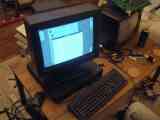 | 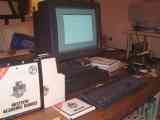 | 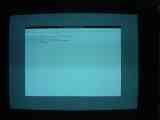 | 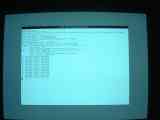 |
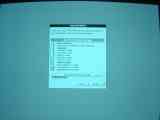 |  |  |  |